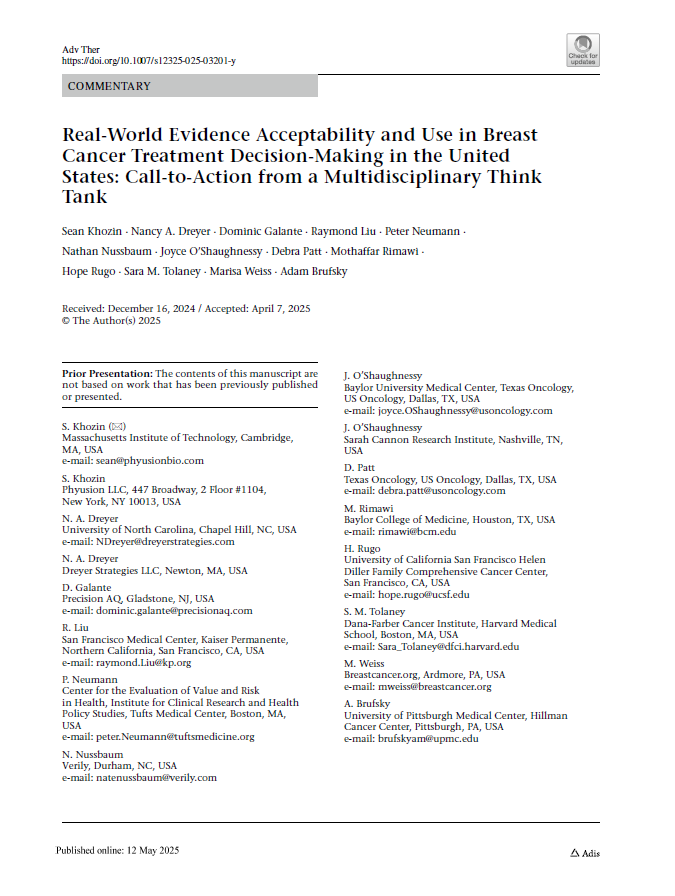
The European access environment is in a constant state of evolution. Many of these changes are long-running and, in Part 1 of this series, we touched on some of the ongoing political and budgetary pressures in Europe that are shaping the pharmaceutical policy and health technology assessment (HTA) processes. In Part 2, we explored the opportunity for biopharma companies that can align to new incentives and harness changes in orphan drug designation, HTA processes, and a high-level review of the new Joint Clinical Assessment (JCA).
Here, in Part 3, we cover the implementation of the JCA, the implications for the “health technology developers” (HTD), the pharmaceutical manufacturers and biotech companies, and explore the impact on how they prepare for European launch. In contrast to the long-running budgetary pressures and policy shifts, the implementation of the JCA represents a more fundamental shift for European market entry and will require HTDs to adopt new processes and resources to address the new requirements.
While many articles have been written on the JCA, our aim is to dive deeper into the potential impact for HTDs considering European market entry, evidence requirements, and potential risks. While oncology and advanced therapy medicinal product (ATMP) HTDs are the most immediately impacted, all manufacturers should understand the respective implications for their integrated evidence planning.
Setting the Stage – What is the JCA and Why Does It Matter?
At the start of this year, the European healthcare landscape crossed the threshold of the largest transformation in recent years, with the start of the phased JCA implementation. This pivotal development under the EU HTA Regulation aims to streamline processes and address long-standing inefficiencies in market access.
Currently, HTDs must prepare multiple market-level evidence submission dossiers, tailored to the diverse HTA requirements of individual member states (MS). The JCA aims to simplify this process by conducting a single clinical evidence evaluation that can be used across all EU countries. Through this standardization, the JCA will (theoretically) reduce duplication of effort, create a more efficient and predictable access environment, and deliver earlier access to patients, however the extent to which this is realized remains to be seen.
The implementation has kicked off with the inclusion of all oncology drugs and ATMPs filing from January 12th, which will be required to submit a dossier during the EMA MAA process. The first extension of this will be to orphan designation products in 2028, then to all centrally authorized medicinal products in 2030.
For any given filing, the JCA will be conducted in parallel to the EMA MAA submission, with strict timelines anchored to existing MAA timelines. The final JCA report is to be published no more than 30 days following EC adoption of the CHMP positive opinion.
It’s important to note that while all economic (pricing and reimbursement) discussions remain within the purview of national authorities, the JCA will influence these deliberations by shaping perceptions of clinical value. Recently published draft policy amendments in Germany integrate the JCA timelines with the AMNOG process and allow for the G-BA to incorporate the JCA report into its consultation and decision-making process, provided they arrive before the national benefit report is finalized. Other MS are going further, with the Cypriot Health Minister presenting a proposal in December 2024 for a new joint procurement mechanism for therapies undergoing the JCA. Several smaller MS have already signed up, with reported additional interest from other larger MS.
For manufacturers, this shift represents both an opportunity and a challenge. Through the JCA, HTDs should be able to expand access across European markets more rapidly, however there will be increased upfront burden in preparing the JCA dossier. Early preparation, a clear understanding of JCA evidence expectations for the clinical assessment, and alignment with the overall commercialization strategy will be critical.
The Role of PICO Scoping
Central to the JCA’s methodology is the PICO framework, defining the Population, Intervention, Comparator(s), and Outcomes relevant to the clinical assessment. This approach ensures that evaluations are rigorous, transparent, and aligned with stakeholder priorities.
- Population: Patients/population(s) in which the intervention under assessment should be used
- Intervention: Therapeutic, diagnostic or preventive intervention under assessment (i.e., new innovation)
- Comparators: Alternative intervention(s) against which the intervention under assessment should be compared (i.e., clinical comparators)
- Outcomes: Endpoints / clinical measures of interest
PICOs will be nominated by the MS in a survey collated by nominated (co-)assessors, with the MS being encouraged to seek input from national clinical experts and patient groups. The (co-)assessors will consolidate the nominated PICOs into the lowest number possible, validated by an EMA JCA Subgroup, before being shared with the HTD.
It’s critical to note here that the HTD has limited input into the scoping and is required to submit evidence for the nominated PICOs in their submission dossier. Current participation is restricted to submitting information before the PICO survey, upon request, and by requesting an explanatory meeting.
There is a risk that there will be a significant number of PICOs; Roche shared at ISPOR that for two oncology filings in 2025, they are predicting 25 and 36 PICOs, respectively. HTDs should look to take a proactive role where possible to ensure that the final PICOs are a true representation of the situation across the MS.
Once informed, HTDs only have 100 days to prepare and submit evidence for the JCA, which is insufficient to generate new clinical or economic data, especially given the layers of compliance and stakeholder reviews involved in submissions. Consequently, it will be important to incorporate PICO principles into integrated evidence planning well in advance of any EMA filing.
Implications for Evidence Planning
HTDs preparing for European submissions will need to start earlier on integrated evidence planning, including cross-functional perspectives important for understanding JCA requirements: Regulatory, Market Access, Clinical Development, Medical, and Health Economics. Furthermore, involvement of MS affiliate teams will be crucial for the more detailed understanding required. However, this will be earlier than they are typically used to becoming involved in launch planning.
Key considerations for HTDs include:
- Resource Management and Organizational Development: The JCA’s requirements will drive earlier resource allocation, with HTDs needing to reassess teams, possibly creating specific new roles for managing the JCA and investing in developing the technical skills at the global and regional levels. While larger global pharmaceutical companies will be able to absorb this—with many already discussing the dedicated teams they have established—emerging biotech looking to launch their first assets will likely need to lean onto outsourced solutions and capabilities to help support JCA requirements and navigate the evolving landscape.
- Stakeholder Collaboration: Leveraging partnerships with patient advocacy groups and clinicians – likely already an established process in clinical development – to ensure that evidence captures meaningful outcomes and reflects patient priorities will support eventual JCA outcomes. Furthermore, as MS are encouraged to seek input from patient groups and clinical experts, early collaboration will increase the likelihood that any internal PICO mapping aligns to eventual JCA PICO scoping.
- Early Dialogue and Alignment with Market Priorities: External engagement with HTA bodies and regulators before pivotal trial design to ensure understanding the specific populations, comparators and outcome expectations for each member state will be essential.
- Joint Scientific Consultations (JSCs): HTDs should consider engaging with the new JSC platform that enables them to enter early scientific dialogue with HTA bodies as well as seek guidance on study design, endpoints, and other critical aspects of development for the European market. Note that JSCs will be considered by the JCA; companies will need to report in their JCA dossier why they have deviated from the advice provided and therefore should weigh the risk / opportunity trade-off of leveraging the JSC.
- Internal PICO Mapping: Evaluating all potential PICOs in advance of finalising pivotal trial design will ensure that manufacturers can address the most critical PICOs through the clinical trial data (the most robust of evidence sources).
- Additional Evidence Integration: It will, of course, not be feasible to cover all PICO eventualities through randomised clinical trials (RCTs). Early understanding will enable early integrated evidence plans (IEPs) to include indirect treatment comparisons (ITC) and real-world evidence opportunities to address PICO gaps. However, the limited acceptance of ITCs through the EUnetHTA program raises concerns on ITC acceptance in the JCA dossier, and how HTDs can meet the expectations of the (co-)assessors.
- Modular Dossier Development: Global value dossiers should be treated as “living documents”, with initial development started early, in clearly defined modules, and updated regularly. Manufacturers should undertake initial PICO mapping in the years before actual submission, developing flexible plans that can address variations in patient populations and therapeutic contexts. It will be essential to tailor them to evolving JCA frameworks and national HTA needs.
Early understanding and a robust PICO mapping will not only support successful JCA evaluations but will also strengthen preparations for the national submissions, facilitating faster access and improved patient outcomes. By adopting an iterative mapping / modular design, HTDs will be able to adapt to the evolving understanding of the clinical landscape, as well as evolving understanding of the JCA process itself.
Navigating Uncertainty – Learning from the Pioneer Assessments
The first wave of therapies to undergo JCA evaluations this year will provide invaluable insights into the framework’s practical implications and highlight potential bottlenecks. It has been estimated that approximately 30 JCAs will be initiated in 2025, with the first expected publication by early 2026.
Initial challenges are likely to include:
- Timelines and Process Efficiency: While the timelines have been clearly laid out in theory, synchronizing EU-level assessment on the back of national-level contribution could create delays, especially during the initial assessment. In fact, markets are already preparing for potential delays with the draft policy amendments in Germany including G-BA authority for the G-BA to suspend assessments for up to 3 months if, JCA reports are delayed.
- PICO Scoping Outcomes: Breadth of potential PICOs included in final scoping creates more complexity for manufacturers earlier than previously required—particularly around comparators—and therefore there is risk that dossiers will be considered insufficient because of evidence gaps due an extensive PICO scoping and damage the overall clinical value perception of new products. However, it may be that a very pragmatic approach is taken in the PICO scoping, consolidating down to only the most vital.
- Evidence Gaps: The pioneer HTDs that will be the first to receive their respective PICO scoping have been required to develop their evidence in an uncertain environment. There is high chance that there will be evidence gaps for certain PICOs and, with only 100 days to file the JCA dossier, not sufficient time to generate new data. How the JCA report deals with these evidence gaps will be telling in whether future HTDs can deprioritize certain PICOs to focus on the most critical.
- Interpretation and Adoption: While the JCA aims for consistency, the economic discussions remain at the MS level, so manufacturers must still engage with the individual markets. There is no guarantee of improving patient access across the EU.
The overall impact of the JCA will not be known for several years, until the pioneer HTDs have completed their launch cycles. Dedicated resources are required to monitor the early JCA submissions, timelines and publications, as well as broader commentary to keep up to date with the latest insights.
Conclusion and the Cross-Functional Mindset
For now, the JCA remains a major new addition to European launch requirements. For manufacturers, success in this new era will depend on their ability to anticipate changes, adapt processes, and engage stakeholders effectively. Manufacturers need to act now, investing in robust evidence frameworks and fostering collaboration to succeed in the JCA era.
While much of the discussion on the JCA focuses on the functional implications for Regulatory and Market Access, its implementation will have broader cross-functional impacts. For example, the integration of PICO mapping into integrated evidence plans is particularly critical. Medical Affairs will play a pivotal role in aligning clinical evidence with the expectations of patient groups and clinical experts, ensuring that patient populations, comparators, and outcomes are defined and substantiated in a way that resonates across diverse markets.
Consequently, it is crucial that HTDs approach JCA preparations with a robust cross-functional mindset. Key activities HTDs should invest in include:
- Audit governance structures: Validate that a cross-functional mindset is embedded across teams and eliminate any functional silos that may hinder alignment.
- Establish JCA-Focused Resources: Create dedicated task forces or roles—even if temporary—to drive the JCA process and support asset teams in navigating this new situation. Smaller HTDs with limited spare capacity will likely need external vendor support to ensure they understand JCA requirements and implement the required changes for pivotal asset launch.
- Pressure-Test Processes: Evaluate clinical development and launch preparation processes to capture cross-functional insights throughout the development lifecycle.
- Integrate Early PICO Mapping: Incorporate PICO mapping into European landscape assessments conducted during pivotal trial design, with regular updates through to launch. Go beyond traditional overviews that focus on the EU4 and consider the broader access environment across EU Member States.
- Embed PICO Evidence Requirements into IEP Development: Make PICO evidence requirement assessments a core component that feed into IEP development and updates.
- Conduct Rapid PICO Assessments for Late-Stage Assets: Understand the potential PICO matrix, identify evidence gaps and associated risks for later-stage assets, and develop targeted evidence generation plans to supplement existing IEPs.
- Revisit Stakeholder Engagement Plans: Optimize engagement strategies to leverage opportunities through JSCs, clinical experts, and patient groups, helping to clarify and align on the most appropriate PICOs.
Blue Matter’s Global Market Access teams are structured to leverage deep internal company expertise across functions – spanning Commercial, Medical, RWE, and Business Development – to support clients in navigating the complexities of JCA implementation. From the earliest PICO mapping exercises and integrated evidence planning to stakeholder engagement strategies and final launch execution, we help ensure that our clients are well-prepared to meet these emerging challenges.









